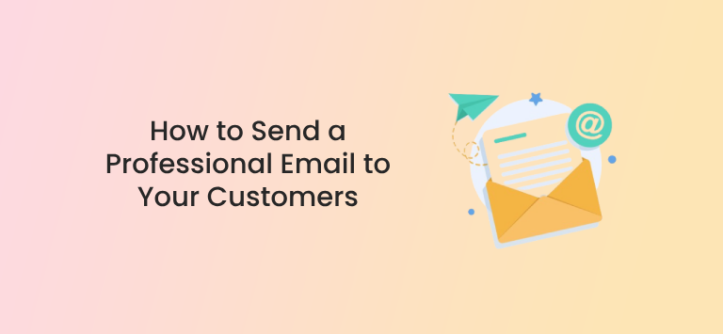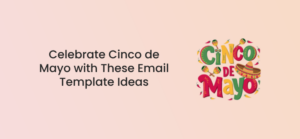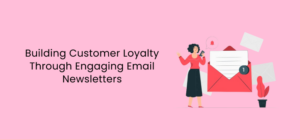Email remains a vital bridge between businesses and their customers. But beyond mere information delivery, crafting professional emails holds immense power to shape perceptions, foster loyalty, and ultimately, elevate the customer experience.
Well-written emails, free from typos and jargon, not only convey information clearly but also project a polished and trustworthy image of your brand. This, in turn, builds confidence and a sense of value in your customers’ minds.
The benefits of professional email communication extend far beyond the initial interaction. When customers feel genuinely heard and cared for through courteous and informative emails, it strengthens their emotional connection to your brand. This translates to increased loyalty and positive word-of-mouth – valuable assets in today’s competitive landscape.
Therefore, investing in crafting professional emails is not simply about efficient communication; it’s about building lasting relationships and fostering brand loyalty. Every interaction, every word, serves as a brushstroke painting your brand’s image in the eyes of your customers.
In this piece, we’ll be detailing all you need to know about sending a professional email to your customers.
Pre-Writing Stage
Before you dive into sending a professional email to your customers, take a moment to solidify the core elements of your email. This pre-writing stage is like building a sturdy house.
Define your purpose
What’s the reason for sending this professional email? Are you making an exciting announcement, providing a crucial update, enticing with a special offer, sending a win-back email, or simply fostering goodwill? Knowing your message’s central aim will guide your content and tone.
Look at this sample from Figma. The purpose of the email is to give updates to their customers about new features and updates.

Image source: reallygoodemails.com
Know your audience
When designing the content of your professional email picture your reader. Are they tech-savvy or unfamiliar with jargon? Young and trendy or seasoned professionals? This understanding will dictate the language you use, the level of detail you provide, and even the humor you might sprinkle in.
Take a look at this sample from Glitch

Image source: reallygoodemails.com
Plan your structure
Think of your email as a journey. Craft an outline that identifies your key points, ensuring they flow logically and build towards your goal. Imagine the recipient taking each step with you, arriving at your desired outcome seamlessly.
Writing the Email
Now that you’ve identified your purpose and target audience, it’s time to craft the email itself. Remember, your goal is to connect with your customers in a way that feels professional, informative, and engaging.
Start Strong with a Captivating Subject Line
Think of your subject line as the first impression you make. It should be clear, concise, and pique the recipient’s interest in opening the email. Avoid generic phrases like “Update” or “Just a quick question.” Instead, use action verbs and highlight the value you’re offering.

Image source: reallygoodemails.com
For example, “Get Ready to Boost Your Productivity with Our Latest Tips” or “Exclusive Offer: Save 20% on Your Next Purchase.”
Personalize Your Greeting
Don’t resort to a robotic “Dear Valued Customer.” Address your recipient by name, showing you recognize them as an individual. If you have their purchase history or preferences, subtly reference it to further personalize the message.
State Your Purpose Clearly and Early
Get straight to the point in the opening paragraph. Briefly explain the purpose of your email and what the reader can expect to learn or gain by reading it. This sets the tone and keeps the email focused.

Image source: reallygoodemails.com
Keep it Concise and Content-Rich
No one wants to read a novel in their inbox. Aim for brevity and clarity. Use bullet points, short paragraphs, and white space to break up the text and make it easily digestible. But don’t sacrifice information for brevity. Ensure your email provides all the necessary details and value you promised in the subject line.
Use Conversational Language
While professionalism is key, avoid sounding overly formal or robotic. Use a friendly and conversational tone that engages the reader and makes them feel valued. Avoid jargon and technical terms unless absolutely necessary.
Highlight the Benefits
Focus on what your email offers your customers. How will it improve their lives, solve their problems, or make their day easier? Clearly communicate the benefits of your message and how it aligns with their needs and interests.
Include a Call to Action
Tell your reader what you want them to do after reading your email. This could be visiting a website, making a purchase, responding to a survey, or simply sharing your email with others. Make the call to action clear, specific, and easy to follow.
Proofread and Edit
Before hitting send, take a moment to proofread your email carefully. Typos, grammatical errors, and unprofessional formatting can damage your credibility and leave a negative impression. Ensure your email is polished and error-free.
Additional Tips to Remember When Writing A Professional Email
Personalize whenever possible
Personalization starts with the first line in your email. Ditch the generic “Dear Sir/Madam.” Instead, use the recipient’s name. It shows you’ve done your research and creates a sense of connection. Mention previous interactions, shared projects, or industry news relevant to them. This small gesture demonstrates interest and sets the stage for a more meaningful dialogue.
Also, personalization extends beyond mere words. Use formatting to make your email more user-friendly. Highlight key points, break up long paragraphs with bullet points, and even include relevant visuals. This shows you care about the recipient’s time and understanding.
Use Humour to add personality
Humor and anecdotes can add personality and make your email stand out. However, tread carefully. Ensure the humor aligns with the recipient’s personality and the email’s tone. An inappropriate joke can backfire, leaving you with a strained relationship. When in doubt, err on the side of professionalism.

Image source: reallygoodemails.com
Maintain a consistent brand voice
With so many emails flooding your customer’s inboxes, how do you stand out? The answer lies in maintaining a consistent brand voice.
Start by clearly defining your brand’s personality. Are you authoritative and informative like a financial advisor? Friendly and approachable like a local bakery? Creative and playful like a design agency?
Use words and phrases that reflect your brand’s values and target audience. Create a brand style guide that outlines your preferred tone, language, and even formatting. Share this guide with your team to ensure everyone communicates with the same voice.
Once you know your brand voice, adapt your language for each email. Use formal language for legal matters, but inject humor or personal anecdotes for customer service interactions. Remember, even within your brand voice, there’s room for flexibility and nuance.
Respect email etiquette
When crafting emails for your customers, remember that respect for etiquette is key to fostering a positive relationship. Avoid all caps, excessive exclamation points, and informal language, as these can come across as unprofessional or even aggressive. Opt for a formal tone that conveys courtesy and professionalism, while still remaining personable. Remember, your email is a reflection of your brand, so strive for clear, concise, and error-free communication that leaves a lasting impression of reliability and trust.
Respond promptly to customer inquiries
Promptness in email communication builds trust and fosters positive customer relationships. Every unanswered inquiry is a missed opportunity to engage and reassure. When replying, aim for within 24 hours, acknowledging receipt even if a full response takes more time. Speed shows respect for your customer’s time and demonstrates the value you place on their concerns.
Use a professional email address
When crafting professional emails for customers, a crucial element is using a professional email address. Ditch the cutesy nicknames and opt for a format that reflects your company’s brand and your role within it. Whether it’s your first and last name or your company name and department, a professional address conveys trust, legitimacy, and seriousness. It shows customers you’re a dedicated professional, not just someone sending emails from their personal account – and that small detail can make a big difference in building positive relationships and establishing your brand as a reliable source of service.
Consider email marketing tools for automation and analytics
While crafting personalized, professional emails for your customers is crucial, don’t forget the efficiency and insights offered by email marketing tools. These tools let you automate routine tasks like welcome series or abandoned cart reminders, freeing you to focus on personalized responses and complex inquiries. Additionally, their powerful analytics reveal open rates, click-throughs, and engagement patterns, helping you tailor future emails for even greater impact.
Wrapping Up
In conclusion, crafting professional customer emails is an art form that fosters trust and strengthens relationships. Remember, to personalize your message, maintain a consistent brand voice, mind your etiquette, respond promptly, and use email strategically. By putting these tips into practice, you’ll transform your inbox from a communication channel to a bridge for building lasting connections with your customers. So, open your email client, take a deep breath, and dive into the world of professional customer communication. You’ll be amazed at the positive impact it has on your business and your customers’ experience.




